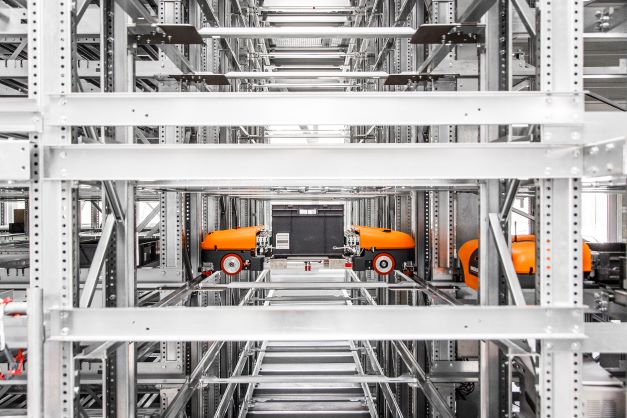HAI Robotics, a global leader in Autonomous Case-handling Robotic (ACR) system for warehouse logistics, is calling its first project in the UK with Chinese cross-border warehouse operator WINIT a success, as deliveries for holiday shopping parcels are about to reach customers.
The project provides 120,000 storage locations with shelving height of 4.3m in a 10,000 sq m warehouse in Tamworth, Staffordshire. By deploying 100 HAIPICK A42 robots and 16 On-conveyor Picking Workstations in the warehouse, goods-handling efficiency is improved between three- and four-fold compared with manual work, with a daily handling volume of up to 50,000 pieces.
The warehouse owner WINIT is a Shanghai-based provider of overall solutions for cross-border e-commerce, and runs overseas warehousing and distribution services in Australia, the US and several European countries. With the project going live, it saw its warehouse throughput spiked, comfortably accommodating the inrushing order-fulfilment requests for cross-border warehousing and logistics from merchants around the world, driven by the online shopping boom since the Covid-19 lockdown.
Demands for global warehousing service has dramatically surged with the flourishing cross-border e-commerce businesses in recent. Custom statistics indicate that in 2020, Chinese cross-border trade volume amounted to RMB1.69 trillion (€0.23 trillion), rising 31.1% from the previous year and the figure is estimated to go up to RMB16 trillion (€2.21 trillion) in 2021. By 2020, the number of overseas warehouses owned by Chinese operators exceeded 1,800, totalling more than 12 million sq m in land area.
However, cross-border warehouse operators are often confronted with some hard nuts to crack.
To start with, a major issue that constantly vexes warehouse owners operating overseas is staff shortages and the rising cost of hiring local labourers. They also found it a headache to maintain a stable workforce in their warehouses, which are often located near commercial hubs in industrialised countries, even with above-average level wages. Automating their warehouses has become a pressing issue.
The second challenge is the huge number of SKUs owned by different merchants, which could range from consumer electronics to baby toys. The fact has raised concerns of storage density and picking efficiency. To meet consumers’ growing demands for short parcels delivery time, furnishing a warehouse with robots that can handle complex order-fulfilment tasks can be a rewarding decision.
Last but not least, a flexible warehousing solution that can be swiftly deployed weighs heavily for cross-border warehouse owners whose growing businesses can’t wait for too long.
WINIT, who found no shortcuts to address those concerns, found the HAI Robotics’ solution a good match for the needs of high storage density, goods-handling accuracy, operation efficiency and flexibility.
With the HAIPICK A42 robot that allows picking and sorting with eight loads in one movement, one worker can handle 450 pieces of goods per hour, which is three to four times faster than manual work. The solution has also improved storage density by 130% with spaces from 0.25m to 6.5m high being fully utilised. The HAIPICK system, which supports intelligent totes identification and labels reading, boasts 99.99% picking and sorting accuracy.
Kane Luo, Vice President of Sales from HAI Robotics, said that a customised plan was made for the project to improve performance, including elevated storage density and innovative workflows to facilitate necessary manual work: “We were primarily obliged to provide ACR system. However, we’ve taken into consideration the whole process from inbounds to packaging of outbound goods. The workstations were also ergonomically redesigned according to overseas standards.”











